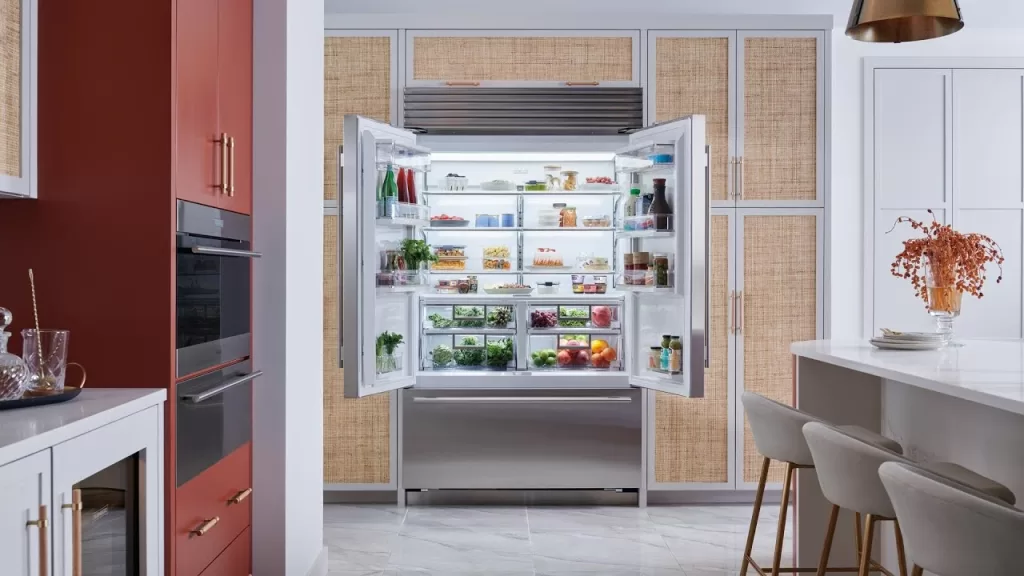Sub-Zero Fridge: How to Remove Molds
Mold is not just a gross and unsightly nuisance but also a potentially dangerous health hazard. Mold thrives in dark, moist environments, making bathrooms a common breeding ground. However, it’s important to note that mold can also grow within your refrigerator, specifically in areas with excess moisture or improper ventilation.
For individuals with bad allergies or sensitive immune systems, mold exposure can trigger uncomfortable symptoms, including respiratory issues, skin rashes, and persistent headaches. To address this issue effectively, our comprehensive guide provides step-by-step instructions on how to safely remove mold from inside your Sub-Zero refrigerator and valuable tips to prevent its recurrence in the future. By following these guidelines, you can ensure a mold-free and healthier living environment for you and your loved ones.
How To Remove Mold Inside Of Sub-Zero Refrigerator
Excessive moisture and food that has gone bad can cause mold to grow inside your Sub-Zero refrigerator. Take action to remove mold inside of Sub-Zero refrigerator as soon as possible.
Clean the Interior of Your Sub-Zero Refrigerator
1. Turn off and remove everything from your fridge, including food, shelves, drawers, and light diffuser.
2. Clean the inside of your refrigerator with a solution of:
- One quart of warm water
- Two caps full of bleach
- A few drops of dish detergent
3. Dry your fridge completely. Leave the doors open and your Sub-Zero refrigerator off to ensure it is completely dry before turning it back on. While the inside of your refrigerator is drying, clean the shelves, drawers, and light diffuser.
Clean the Drawers, Shelves, and Light Diffuser
- Allow the drawers, shelves, and light diffuser to warm to room temperature before submerging them in water. Submerging them cold may cause them to shatter and cause injury.
- Wipe the drawers and light diffuser with a soft cloth, mild detergent solution, baking soda, and water.
- Wipe the shelves with a soft cloth and white vinegar.
- If mold is under the shelf seal or in the frame, soak the shelf or diffuser overnight in a tub of warm water and 1/10 bleach mixture. You may need to use a can of compressed air or a toothbrush if residue remains.
What Causes Mold To Grow Inside Sub-Zero Refrigerators?
With its affinity for dark and moist environments, mold tends to flourish in some regions of our homes. Bathrooms and kitchens, known for their increased humidity levels, are common breeding grounds for mold. Additionally, refrigerators, with their cool and damp interiors, provide an ideal setting for mold to multiply and spread.
Health Concerns Regarding Mold Growing Inside Your Refrigerator
Mold can cause various health problems, such as respiratory issues, skin irritation, and headaches. It is essential to take prompt action if mold grows inside your fridge to prevent further complications. Additionally, if you have any concerns about your health, it is advisable to consult with your doctor for proper guidance and advice. Here are some helpful tips to prevent mold in your refrigerator and safeguard your well-being.
Condensation can form inside your fridge due to temperature fluctuations, creating the perfect breeding ground for mold growth. Also, mold can swiftly colonize if any food items in your fridge have spoiled or are past their expiration date. It is crucial to regularly inspect and maintain your Sub-Zero refrigerator to prevent mold and ensure the freshness and safety of your stored food. By doing so, you can enjoy a clean and hygienic fridge environment.
- Ensure the correct temperature.
Your Sub-Zero refrigerator should be 38 degrees, and the freezer should be 00.
- Inspect Door and drawer gaskets for damage.
Damage to the gaskets can cause cold air to escape, therefore causing the temperature inside to be unstable. If the temperature becomes too high, food can spoil faster.
- Ensure the drain tube isn’t clogged.
A clogged drain tube will prevent condensation from draining. If the condensation cannot drain, it will stay inside the fridge, which creates a moist environment for mold to grow.
- Don’t overfill your fridge.
When you overfill your fridge with lots of food items, it limits the airflow within and can result in the buildup of condensation. This excess moisture provides the perfect breeding ground for mold to grow and spread. So, it’s important to ensure proper space and ventilation within your fridge to avoid this issue and maintain a clean and healthy environment for your food.
- Routinely check for food that has gone bad.
Clean out spoiled food and wipe down shelves if food spillage has occurred.
These helpful tips can significantly contribute to preventing mold from growing inside your fridge. Regularly cleaning and maintaining your fridge can create an environment that discourages mold growth. However, if you discover any mold in your fridge, removing it and thoroughly cleaning the affected area immediately is crucial. If you’ve already taken preventive measures and the issue persists, it may indicate a more substantial problem that requires professional attention. Don’t hesitate to contact the trusted Sub-Zero refrigerator repair experts at Appliance Cowboys today and let their experienced technicians assist you in resolving any refrigerator-related concerns you may have.

